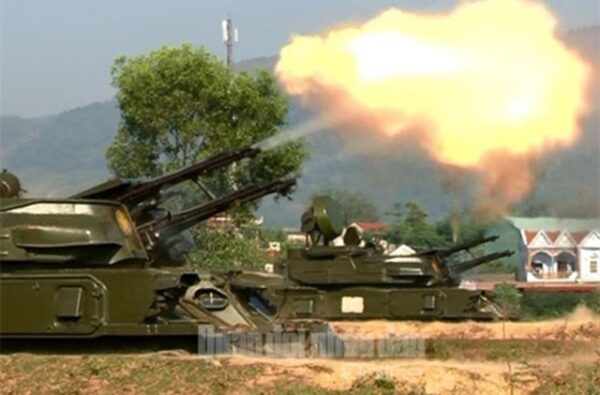
Old Cold War era Anti-Aircraft system, ZSU-23-4 Shilka, may provide a solution to drone attacks over Ukraine
While the conflict between Russia and Ukraine spreads and other countries begin to contribute arms and intelligence to the battles, the rationale of defence from threats coming from the air has perplexed many watching global politics in 2023. The muted threats of balloons and the response to these tools of observation seems to be met with high tech solutions to low tech problems. Alternatively, high tech solutions are not wholly successful in countering low tech threats from terror weapons bombarding civilians in Ukraine, despite the billions of dollars spent on sending the most advance anti-aircraft systems available. When high tech threats do succeed in countering low tech weapons, the cost differential and limited availability of high tech missiles depletes the global supply of those systems available at a great comparative burden. This means that this air defence strategy may not be sustainable for a long period of time.
While many balloons will meet their fate at the end of an F-22, low tech cruise missiles and drones attacking civilian infrastructure in Ukraine might be better met with an update to former Cold War systems. The West German Gepard system, first put into service when Germany was still in the midst of the Cold War, is a system made up of two Oerlikon cannons married to a tracking radar and search radar in one combined system. It has been found that low tech drones can be detected by the Gepard’s radar, and with that information the cannons of the Gepard can engage drones. Accompanying soldiers are also able to better predict the direction of threats with the assistance of the Gepard’s radar, giving them a better chance to knock out drones using shoulder launched MANPADS missiles and manually operated Anti-Aircraft cannons.
While the Gepard is quite dated with older technology, the effectiveness of Cold War systems may provide a low tech solutions to countering terror weapons in the field. With many 2S1 Gvozdika 122mm Artillery systems being seen in Ukraine used by both sides, it shows that a system from the 1960s can still be viable in a modern conflict. Based on a similar chassis as the 2S1, the ZSU-23-4 Shilka is a similar, yet older system to the Gepard with four cannons designed to destroy low flying aircraft. Many of these systems were available in the Soviet Union and Warsaw Pact countries, along with their Cold War allies. While some have been upgraded by Poland, the Czech Republic and other nations, a 2023 upgrade of the Shilka’s electronics and radar system might be a perfect compliment in challenging low cost drones hitting civilian targets in Ukraine. If a technical team could produce such an update to the very old and popular system, a low cost, numerous, and effective drone air defense network could be established over a wide area and save many lives.
While there would not be much of a direct response to balloon facilities due to the lack of an immediate threat, the only real alternative to ending the plague of terror weapons would be to eliminate the weapons themselves. This can be done by the current method of using expensive and limited anti-air weapons, but going by the logic of past conflicts, an end to the production capabilities of these terror weapons might be a logical response to ending their use. As weapons that exist solely to commit human rights violations, it is likely the case that a direct response is legitimate and proportional. The daylight and nighttime bombing campaigns against terror weapons factories during the Second World War were done to eliminate the massive assault of V-1 and V-2 rockets hitting London and England during the War. Weapons labelled at the time as “Vergeltungswaffe” 1 and 2, meaning Retaliation or Revenge Weapon 1 and 2, simply exist to kill innocent people by the direction of a vengeful tyrant. If a country or army would not defend innocent civilians from such weapons with the most immediate and effective means at their disposal, then they are forgetting their sole purpose as an organisation in defence of their people. Whether it is a balloon or terror weapon, a clear, effective and just solution must come with immediacy in countering threats to civilian populations.